1) Less Expensive!
If you buy a sweater from a used clothing store, you can usually find a sweater's worth of yarn for $10 or less
2) Care Instructions
It is common practice for store bought garments to have labels on them that tell you how to wash it. Also, because the clothing in a thrift store is already worn, you can immediately weed out sweaters that are easily felted, hard to care for, pill easily because you get to see what the yarn looks like knit up before you buy it
3) Protects Landfills
Sweaters don't literally protect landfills but if you recycle yarn instead of always buying store bought, you are keeping that sweater out of the garbage heap and you are making something beautiful out of it (remember the 3 R's-Reduce, Reuse and Recycle?). Even though sweaters at thrift stores have the potential of being purchased as is and reused by another customer, it still helps the avid diy enthusiast from burdening the planet.
4) Protects the Ecosystem
Unless you purchase yarn that has a completely see-through policy about their production methods, you could potentially adding to the overuse of pesticides on plant crops such as cotton or bamboo. Reusing yarn decreases the need for yarn production and therefore pesticide use
5) Less Knots
This is just a personal preference, but I find that store bought sweater yarn has fewer knots than conventional yarn. Also, since you are unravelling whole garment pieces instead of using individual skeins, there are less knots necessary for connecting pieces together.
So, now that you are aware of how cool it is to reuse yarn, let's get on our merry way shall we?
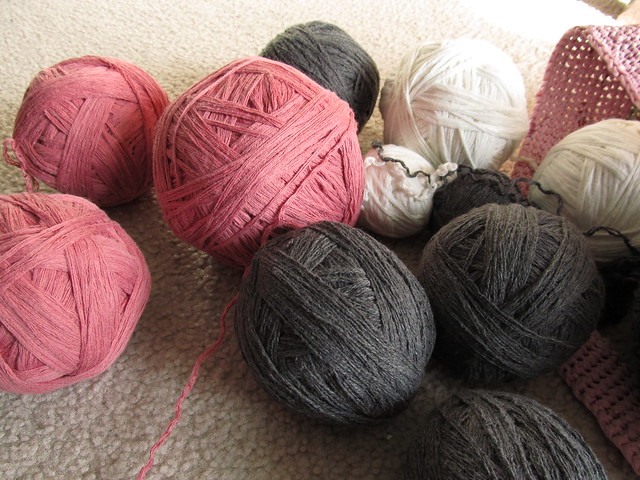
So, first thing you're going to need to do is acquire a sweater acceptable to our purposes. Not all sweaters are created equally but I am here to arm you with the knowledge you need to choose the right sweater.
TIP: It is always better to look for sweaters in the biggest sizes possible, including mens sweaters because obviously there is more yarn. You don't need to make sure the sweater fits your body because it is going to be deconstructed later.

Let's have a look at the inside of the sweater. One of the ways you can tell if a sweater is good for recycling is to check out the seams. If all the seams on your sweater look like this one, which is serged with a serger machine and therefore the pieces of the sweater were cut up and sewn together, then you can put it right back down.
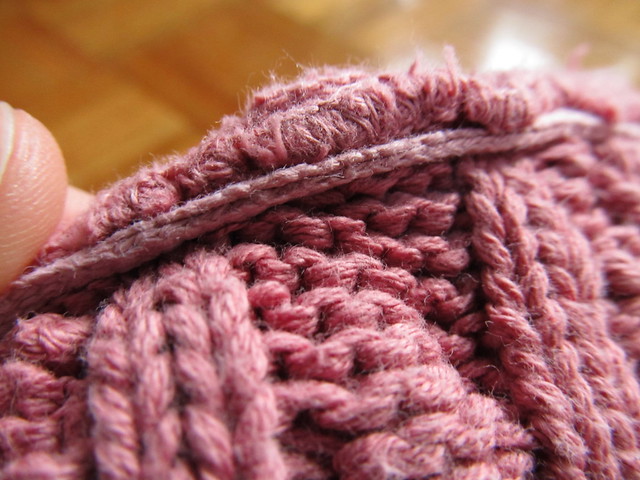
If your sweater seams all look like this, slightly bulky and not sewn together with a sewing machine, then you are one step closer to having a great sweater.
TIP: Make sure you look at the label of the sweater to see what the yarn is made out of and what the care instructions are. Cotton sweaters are pretty easy to unravel, although they might not be super soft when you are finished. Cotton is better for projects that don't need to be against the skin because it is made more durably than other yarns. Also, if the yarn is acceptable next to your skin when it is in thrift store sweater form, it will be acceptable once you unravel it. Be careful of purchasing wool because it will shrink on you if not properly cared for.
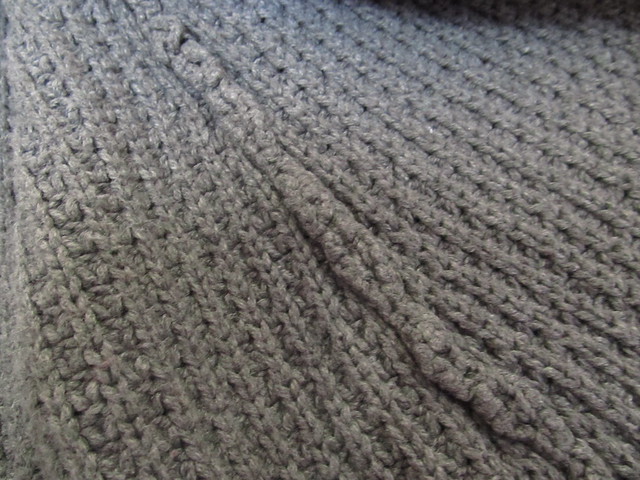
Next, you'll want to figure out what kind of seam you actually have. This sweater, except for the very top of the neck which was serged, has a crochet seam which is very easy to unravel. It is identifiable because it has a row of little v's on one side of the seam and a row of dashes on the other (look at the next picture to see what I'm talking about).
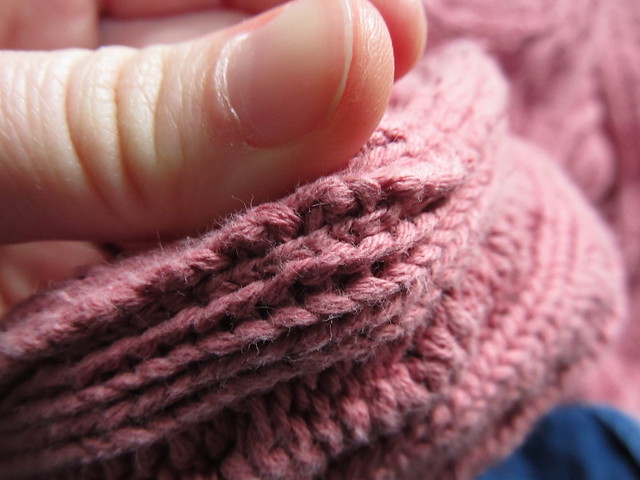
Using your scissors, you'll want to snip one of the edges of the little v's. This is the part that will take practice and might be a teeny bit frustrating at first but trust me, you'll get better. The crochet seam unravels from the top down, which means you'll want to snip one of them as far to the top of the little v's as you can get. Also, I've found that some sweaters are crochet seamed along the side all the way up to the sleeves so it might be as easy as finding the right seam to unravel.
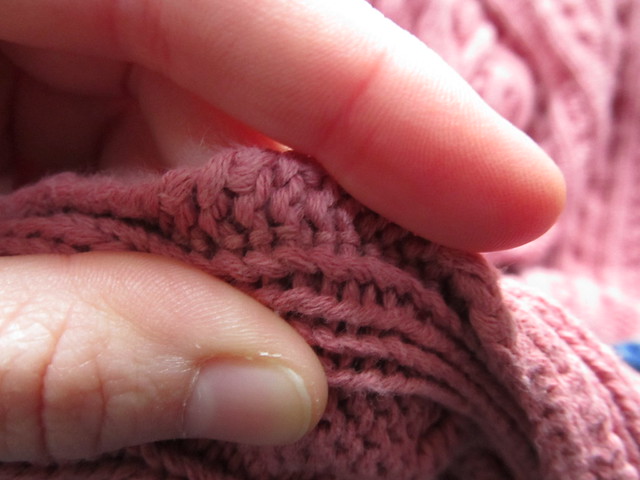
TIP: Don't forget to cut off any tags or care instructions from your garment using a seam ripper or by being very gentle with a pair of scissors. Since most often they are sewn on with a sewing machine, it is best to use a seam ripper if you have one.

Now that you have cut one of your little v's, it's time to start unravelling your seam. You might need to untangle the thread a little bit first, but once you have your seam free, you can just pull on the string and it comes undone very nicely for you.
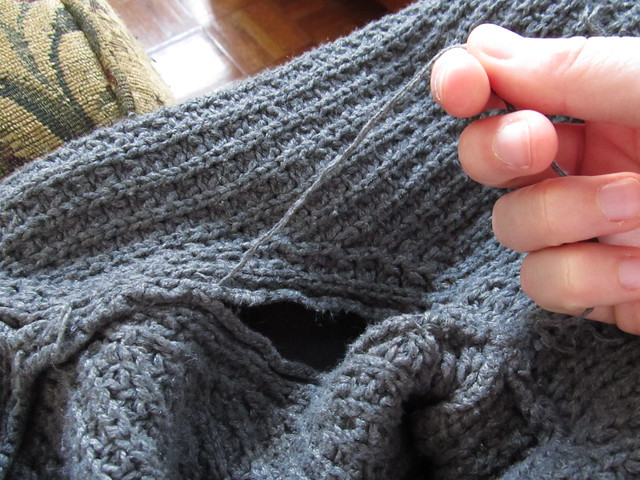
Once you have removed all of the seams from your garment, you can unravel each piece of the sweater. TIP: It is always better to wind the yarn into a ball as you go because it reduces the risk of tangling that would occur if you left all the unravelled yarn in a pile (trust me, I know from experience how much "fun" unravelling knots is!)
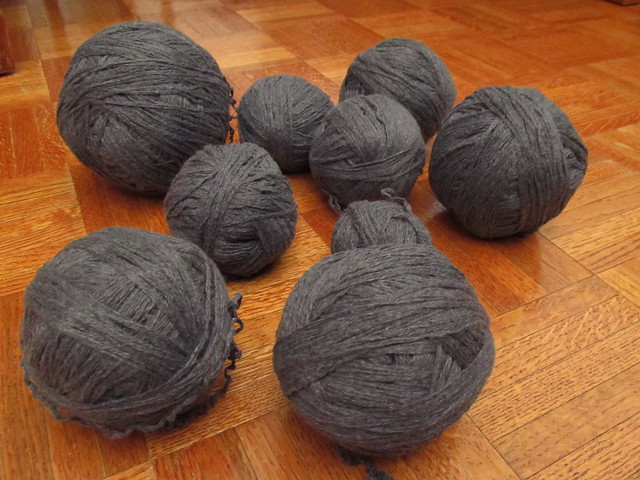
With a little practice, you can start knitting from recycled sweaters in no time! If you have any questions, feel free to ask, I'd love to help!
No comments:
Post a Comment
I would love to hear comments! You can leave a comment as Anonymous but I would also love to know who you are and what you think of my blog!